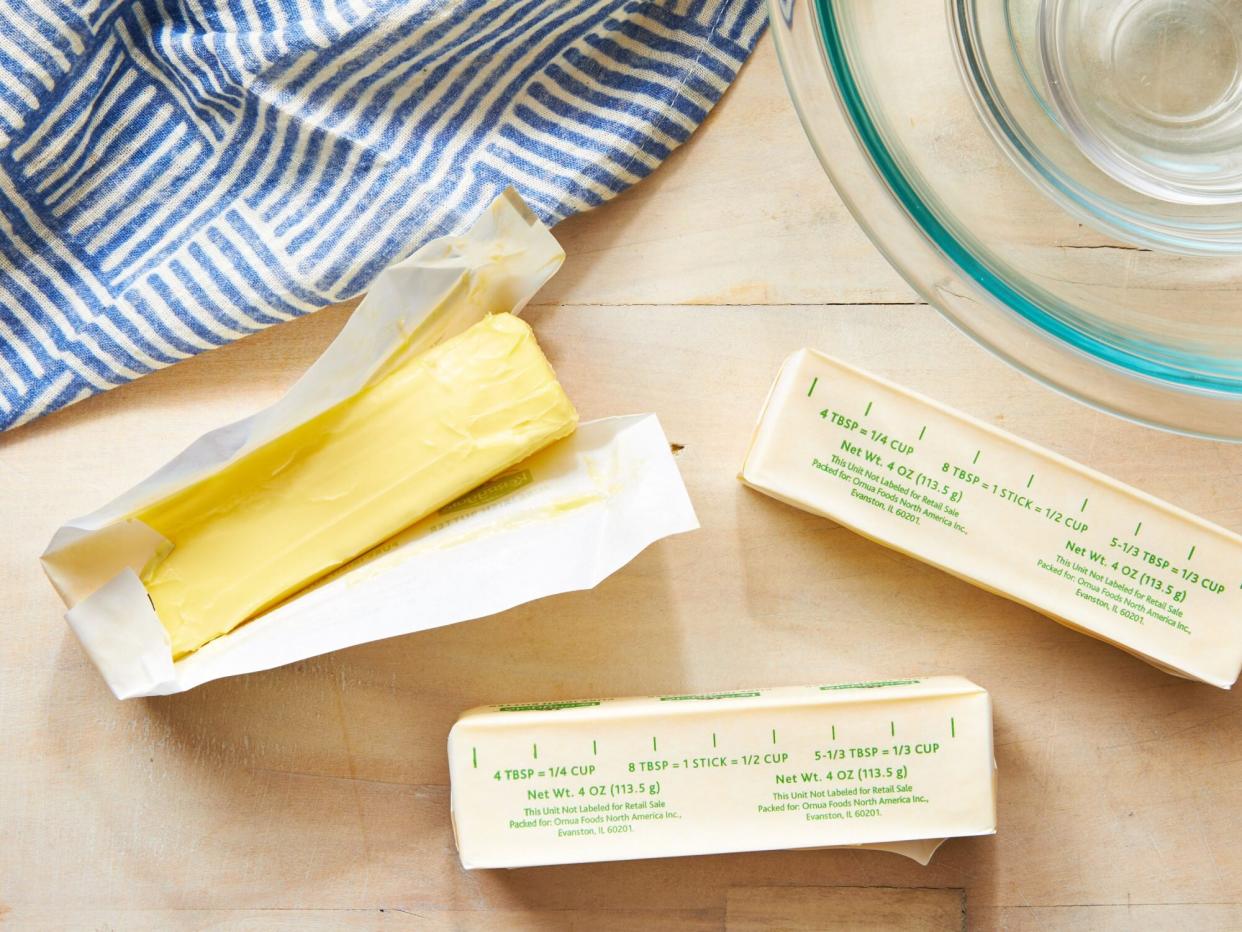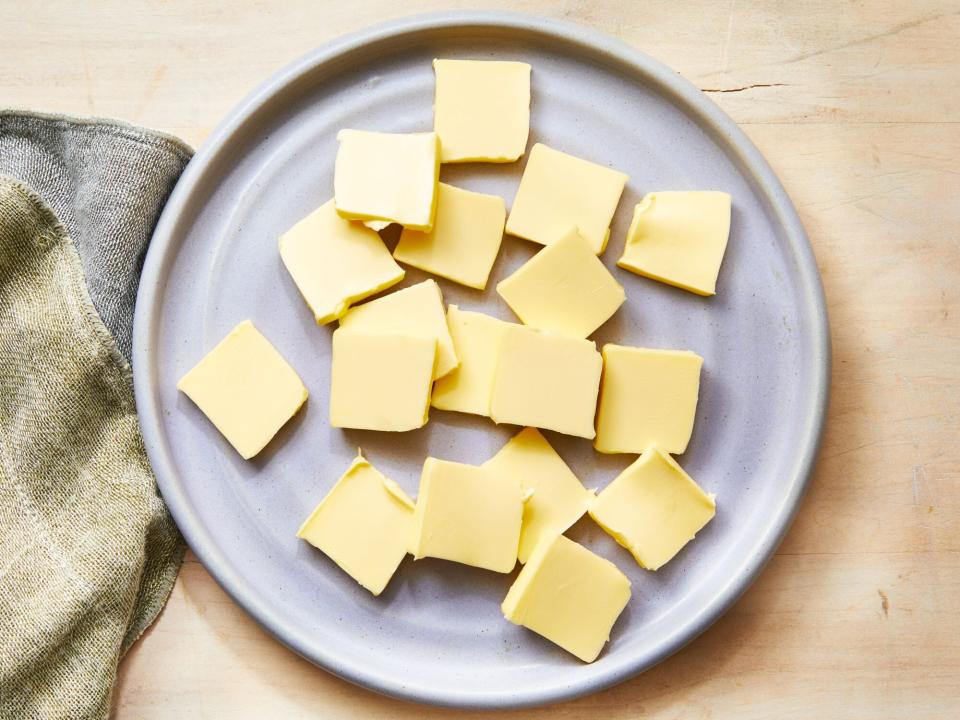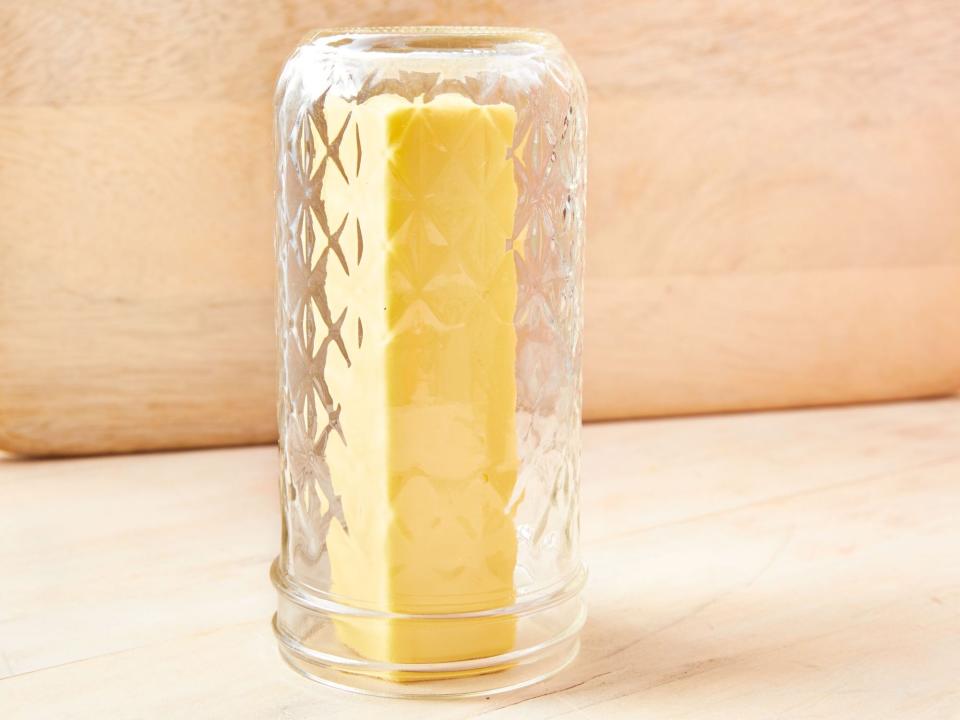How to Soften Butter

Photography: Caitlin Bensel; Food Styling: Torie Cox
Diving in on a baking project? Don't forget to soften the butter first!
Softened butter is used in a variety of recipes, from yellow cake and pound cake to your favorite cookies and buttercream frosting. Softened butter is also used to make compound butter, which can easily enhance the flavor and look of a dish.
But how exactly do you soften butter? There are a few methods to try. Keep reading to find the best option for your next recipe.
Why Soften Butter?
If the ingredients list for your recipe says softened butter or room temperature butter, they're one in the same. These terms are often used interchangeably. However, it is important to note that room temperature can vary drastically, depending on the warmth of your home.
Butter plays a key role in setting cookie dough or cake batter up for success, so it's important not to ignore the softened note in the ingredients list. Softened butter is easier to cream with sugar, allowing air to be incorporated into the mixture. The air bubbles that form then help with the rise of the baked goods, making them light and airy. These crucial air bubbles cannot be properly incorporated into butter that is too cold or butter that is too soft or melted.
Softened butter is also crucial for making smooth frostings.
How Long Does It Take to Soften Butter?
The time it takes to soften butter will depend on the softening method. Leaving a whole stick out on the counter can take 30 to 60 minutes, and this is the method recommended by most bakers as it requires less intervention.
However, the counter softening method involves pre-planning, and sometimes you don't have an hour to wait. Here, three ways to soften butter—and then a few ideas for softening butter even faster.
How to Soften Butter
The goal of softening butter is a stick that gives slightly when pressed but doesn't sink too much. These methods will help you get that stick just right before you bake.
1. Leave it out
This is the simplest method for softening butter. Remove the butter from the fridge, and let it sit out on the countertop with the wrapper still on. It will soften in less than an hour.

Photography: Caitlin Bensel; Food Styling: Torie Cox
2. Cube it
Unwrap the stick of butter and place it on a plate. Cut the stick of butter into cubes. Breaking up the stick will help to speed up the process of softening the butter on the counter.

Photography: Caitlin Bensel; Food Styling: Torie Cox
3. Use a jar
Run very hot water inside a jar, then dump out the liquid. Place the jar over the wrapped stick of butter, with the opening side down on the counter. The heat from the glass will help to soften the butter faster than just leaving it out on the counter on its own.

Photography: Caitlin Bensel; Food Styling: Torie Cox
How to Soften Butter Quickly
Need to soften butter quickly? While the above methods are ideal if you have the time, there are a few ways to speed up the process even more.
1. Grate it
Cold butter can be grated using a cheese grater to break it up. This method will warm up the shreds quickly, allowing for easier creaming with sugar.
2. Beat it
Another quick option with a few more tools? Place a stick of unwrapped butter in a plastic zip-top bag. Use a rolling pin to softly pound it a few times, breaking it up and softening it along the way.
How Not to Soften Butter
It's best to avoid the urge to pop the stick of butter in the microwave to speed up the process. Melting butter in the microwave can change its structure too much, and that change in structure can prevent the crucial air bubbles from forming in a recipe.
If you're not using the butter for baking, it can be softened in the microwave on low power in small time increments.
How to Tell When Butter Is Soft
So how can you tell when butter is properly softened? Of course, you can use a thermometer, which should read 65°F. Or you can do it all by feel!
If you gently push into the butter with your finger, you should see a small indentation. If the butter squishes out of the wrapper, chances are, it's too soft.

FAQs
Got more burning butter questions? These answers might help.
Can butter be too soft?
When butter is cold, it is a solid. When it gets too hot, the fat begins to break down. Microwaving can cause butter to become too soft and melted, but leaving it out in hot conditions can do the same. If any part of the butter is melted, it is too soft.
How do you soften frozen butter?
If you've bought butter and tucked it away in the freezer for later use, thawing is an important step. Transferring frozen butter straight from the freezer to the countertop to soften can create unwanted condensation. Instead, allow the butter to thaw in the refrigerator before softening it.

